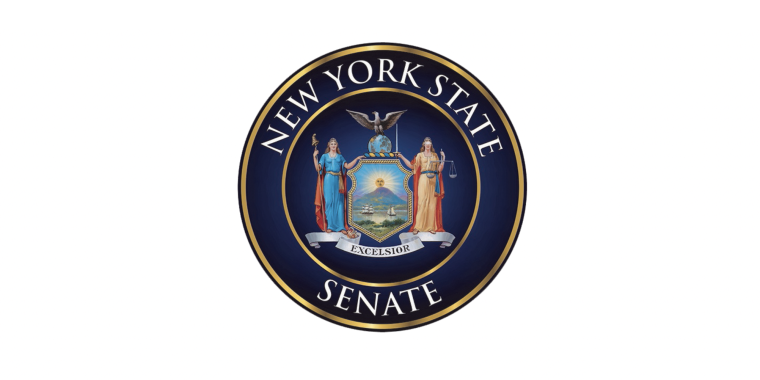
Testimony Before The New York City Rent Guidelines Board Regarding Proposed Rent Increases on June 16, 2005
Liz Krueger
July 12, 2010
My name is Liz Krueger and I represent the 26th Senate District, which includes Manhattan’s East Side and parts of Midtown. I want to thank you for providing me with this opportunity to testify on the range of proposed rent increases for rent stabilized tenants- anywhere from 2 to 4.5% for one-year leases and 4 to 7% for two year leases. Even if the rent increases ultimately approved are at the low end of the proposed ranges, I have many serious concerns about what this decision would mean for the more than two million low, moderate and middle-income rent stabilized residents of New York City who are already facing nearly unprecedented levels of unemployment and cost of living increases.
During these extraordinarily difficult economic times, I fear that rent increases of 4.5% and 7% will lead to further hardships, and even evictions, for thousands of New York City’s families. The effects of these increases on seniors, the disabled and other vulnerable New Yorkers on fixed incomes would be especially grave.
I strongly encourage the board to reconsider its preliminary vote and enact a rent freeze this year. A freeze is warranted due to excessive and overly generous increases that the Rent Guidelines Board has provided to landlords over the past several years that have contributed to the acute affordability crisis that New York’s housing market is now faces. Such a decision would be entirely consistent with the legislative mandate and jurisdiction of the Rent Guidelines Board, which was established in 1969 to set rent guidelines that counteract the effects of an acute housing shortage. Free market conditions and the rules of supply and demand do not apply to the NYC rental market. This shortage still exists —according to the 2002 Housing and Vacancy Survey, the vacancy rate is 2.94%. A vacancy rate of less than 5% institutes an emergency condition under New York State law. The RGB’s mission is to construct or stimulate “normal” or “fair” rent levels in a market driven by chronic scarcity and instability. The issue of affordability should be a central factor in determining guidelines for this year. The Board’s central role in establishing the rents for over a million tenants underscores the importance of having local control in an issue such as housing.
The return of home rule through repeal of the Urstradt law would allow New York Cityto determine its own rent laws and address its housing crisis. I have sponsored legislation, Senate bill S2735 which would repeal this law. Until this law is repealed, the RGB is the only locally controlled city entity that has any role in addressing the issue of housing affordability and controlling excessively high rents.
Below are the key justifications for my position, as well as suggestions about how the RGB can expand its role in preserving affordable housing in New York City.
Why is a Rent Freeze Appropriate This Year?
· While it is reasonable to expect tenants and landlords to share the burden of increased operating expenses, this burden must be shared equitably. It is unconscionable for building owners in one of the most profitable economic sectors of our economy to pass all of their expenses onto tenants who have a median household income of $32,000 and are facing numerous other regressive taxes and fees.
· Building owners legitimately claim that their operating expenses have risen during the last year due to the rising property tax rates and the cost of insurance. However, the rent regulated real estate market continues to be one of the most consistently profitable investments in New York City. This sector of the NYC’s real estate market remains so strong that even after the recent rise in operating expenses, Crain’s New York Business described it on May 5th, 2003 as “one of the hottest segments of the New York real estate market. The stock market is volatile, and the commercial real estate is too risky for many investors. Refinancing is cheap. Rent regulated buildings offer a consistent return.”
· Owners of rent regulated buildings have done extremely well over the past decade – they have seen both their profits and the value of their properties rise exponentially. According to the RGB’s 2005 Income and Expense Study, owners’ Net Operating Income (the amount of income remaining after all operating and maintenance expenses have been paid) has risen almost every year since 1989. This same study reveals that owners’ average net operating income increased by 18% from 1989 to 2002 after adjusting for inflation, while tenant incomes have not risen at the same rate.
· This year’s Price Index of Operating Costs (PIOC) must be understood in a larger historical context. The dramatic increase in Net Operating Income since 1989 suggests that the RGB has historically overestimated owners’ operating and maintenance costs, and instituted guidelines higher than those which were required to enable owners to properly maintain their buildings and profit margins. Tenants received increases of 2% and 4% in 2002 despite the fact that all research revealed that owners’ costs actually decreased.
· The RGB’s 2005 Mortgage Survey reveals that interest rates for new and refinanced multifamily mortgages are at historic lows. Low interest rates, combined with high levels of competition between lenders, have created extremely favorable conditions for owners of regulated buildings, and decreased the amount of revenue owners must allocate to debt service on their properties. This fact is not considered in the PIOC.
· One of the most important factors the RGB must consider is whether owners of regulated properties have the necessary income to maintain their buildings. The overall condition of the city’s rent regulated housing stock is healthy and continues to improve; the RGB’s 2005 Income and Expense Study reveals that only 10.9% of all properties are distressed, down from 14% in 1990.
· Landlords have many additional methods to increase rents to account for costs and be reimbursed for necessary repairs—such as MCIs, vacancy increases, luxury decontrol and individual apartment improvements.
· Furthermore, owners of rent regulated units have the right to receive hardship increases if they do not receive a certain rate of return on their investments. The fact that so few hardship applications are filed each year reveals the overall health of the sector, as well as the reticence of owners to open their books to inspection as is required during the hardship application process.
Larger Implications and Economic Context of RGB’s Decision
· Section 26-510(b) of the Rent Stabilization Law requires the RGB to consider “relevant data from the current and projected cost of living indices” in its deliberations; the RGB members are also permitted to consider the effects of their decisions on the availability of affordable housing throughout the city.
· There is a direct correlation between RGB increases, the loss of affordable housing as more units become subject to vacancy decontrol, and increased levels of homelessness. Approximately 13,017 rent-stabilized units were deregulated last year, more than 8,856 of these due to vacancy decontrol. In 2004, an average of 38,136 people stayed in city homeless shelters each night; the number of families staying in shelters was 50% higher than in 2001. The RGB’s proposed guidelines would exacerbate the already dire circumstances of New York’s low and moderate-income families. More and more low-income families have become homeless – there are more homeless people in NYC than at any time since the Great Depression.
· The proposed guidelines would also have significantly deleterious effects on middle-income families. The preservation of affordable rent regulated units is essential to efforts to keep middle-class families in NYC and to the maintenance of healthy stable communities. If we truly want the city to maintain its vitality and diversity, we must do all we can to ensure an effective rent protection system.
The Increasing Importance of Affordability
· Rent hardship afflicts poor and middle-class households alike, with half of all New Yorkers paying at or over the federal hardship level of 30% of income in rent, and a fourth of all households paying more than half their income in rent. The median rent burden for poor households is 62% and 74% percent pay at least half of their income toward rent. According to a Community Service Society study, 43% of poor New Yorkers experienced a housing hardship, primarily falling behind in their rent payments at least once during the year.
· The average market rate rent for apartments of all sizes below 103rd Street is $2,706 while the average rent for a rent regulated apartment of all sizes below East 96th and West 110th was $1,503. This marked difference in affordability underscores the importance of rent regulation in our city and to its residents.
· According the Housing Vacancy Survey, New York City ranks 11th in the nation in housing costs yet only 37th in median income. While tenant incomes have declined in real economic terms when adjusted for inflation which has increased over the past year, landlord profits in terms of net operating income have increased or remained constant.
Other Important Roles for the RGB in Protecting Affordable Housing
· The RGB has made significant contributions to the public understanding of housing issues by producing a wide range of empirical studies. This research role has made the RGB a key participant in the ongoing public conversation about the fairness and effectiveness of the rent stabilized system, and I encourage the Board to utilize this resource to the fullest extent possible.
· The PIOC is an extremely imprecise and controversial measurement of owners’ income and expenses. The NYC RGB should have the ability to make decisions based on owners’ actual yearly data. The rent guidelines boards of Nassau, Westchester and Rockland counties, which have the power to subpoena owners’ revenue and income data, consistently pass significantly lower increases than the NYC board. Tenants in NYC should have the same right as tenants in Nassau, Westchester and Rockland counties to know that the increases on their apartments are based upon their landlords’ income and costs.
· The RGB has the power to adopt resolutions with respect to the legislative design and administration of the rent stabilization laws. I strongly urge the RGB to pass a resolution calling upon the State Legislature to require NYC landlords to provide data directly to the RGB each year. Furthermore, the RGB should call o the state legislature to repeal the Urstadt law, and restore local control to New York cityover its housing policy.
· The RGB should also pass resolutions asking DHCR to keep more comprehensive data, to provide complete data to the Board and the public and to proactively investigate complaints of illegal deregulation of apartments, questionable MCI increases, and harassment charges.
Thank you again for the opportunity to testify. I look forward to continuing to work together on this and other important issues.

